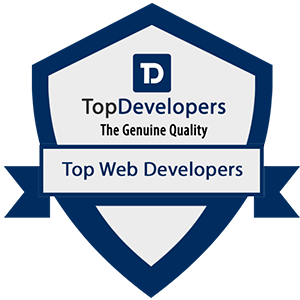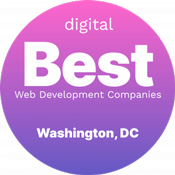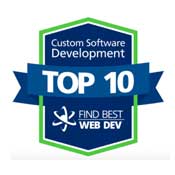Solutions
Supply Chain Management Software Development Services
Tell us about your project.
Automate key warehouse processes, integrate supply chain based software solutions, and manage enterprise-scale operations easily with Orases supply chain management software.
Why Choose Orases?A good supply chain management software, or SCM, will help you streamline the processes of procurement, inventory, warehousing, tracking, and reporting to drive visibility and cut costs. Proper supply chain management is essential to running any modern business that wants to remain competitive.
However, with growing international complexity and rapid innovation across all industries, it has become more challenging than ever to keep up with every shift of the global system. The needs of partners change, laws and tariffs are updated regularly, and occasionally there are massive disruptions caused by illness, politics, or even an unfortunate boat getting stuck somewhere.
With an estimated revenue of $20.24 billion in 2022, it’s clear that supply chain management software is a much-needed product across businesses of all sizes to traverse these tumultuous waters.
That’s why your business needs reliable, comprehensive SCM software to take it from average to exceptional. As a business investment, it’s natural to want to do as much research as possible before committing to a product. In this article, we will discuss what a quality SCM can do, what to look for, and how an SCM can transform your company.

Additional Custom Software We Develop
Engaging solutions that are proven to work.
Orases has developed a wide range of custom software solutions across a multitude of industries over the years. Here is what we offer our business clients, regardless of the size or industry they operate in:
Advanced Web Applications
We will design and develop applications for your organization’s website. These applications are well-optimized for performance without sacrificing security.
API Development
The APIs developed at Orases provide businesses with the ability to run testing automations to check app performance, are able to integrate with multiple apps & systems and can be adapted to new processes & software.
Application Modernization
If your product is using legacy software and needs to be updated, Orases will perform a complete refactor of the code. This will allow it to be faster and more customizable when attempting to use or update the program.
Application Re-Engineering
Our custom software developers are committed to eliminating bugs and issues with all types of software solutions and applications. We will work to keep your organization’s software up and running without problems.
Auditing Software
Businesses that acquire custom audit software are able to improve efficiencies by automating audit-related processes. All custom audit software we develop adheres to all industry compliance regulations.
Case Management Software
Organizations in fields that involve case work can benefit from case management software. Our case management software improves internal communication, information sharing between departments & report generation.
Cloud Applications
Our custom software development team develops cloud applications that use remote servers for processing logic, can be accessed through internet browsers and offers the same functionality of a native app with additional key advantages.
CRM Software
With CRM software, businesses are not only able to improve customer relationships but can also increase productivity, improve lead generation and strengthen their security.
E-commerce Applications
We will develop an e-commerce application for organizations looking to sell their products online. These applications will enable companies to accept payments and handle every portion of commerce online.
Enterprise Applications
Enterprise applications allow companies to conduct important business operations. We will assist your organization in the development of a custom enterprise application.
ERP Software
The custom ERP software solutions we develop have been proven to effectively consolidate data and streamline processes with advanced automations and integrations.
Grant Management Software
The grant management software solutions developed at Orases are designed to simplify the grant application process, provide advanced reporting capabilities and can integrate with existing CRM, BPM or ERP software systems.
HIPAA Compliant Applications
Businesses and organizations which operate within HIPAA compliant industries are required to have secure applications which adhere to HIPAA compliance guidelines. We have years of experience developing secure and innovative HIPAA compliant applications.
Inventory Management Software
By integrating inventory management software with a custom warehouse management system, organizations are able to view precise inventory levels, improve order management efficiency, and increase the accuracy of sales forecasting.
Legacy Systems
Regardless of the system your organization works with, our team will modernize legacy software for you to use. We have extensive experience with a range of technologies & will work to create your application using the legacy software.
SaaS Applications
Software as a service (SaaS) allows companies to purchase your software on a subscription basis. Our team will develop a SaaS application to maximize your organization’s profitability.
System Integration
We are able to integrate systems & applications that handle accounting, customer relationship management, content management, enterprise resource planning and reporting to provide businesses with seamless communications.
Warehouse Management Systems
Through the implementation of a custom warehouse management system, supply chain organizations are able to optimize workflows, streamline processes, and view real-time data across all locations and points of the supply chain lifecycle.
Web Portals
The development team here at Orases has years of experience building highly custom web portals which focus on improving process efficiencies and enterprise-wide collaboration through user-centric features, advanced automations, and seamless third-party software integration capabilities.
Application Replatforming
Upgrade your systems and boost performance with our replatforming services. Seamlessly transition to cutting-edge technologies for enhanced performance and future-proofing.
Data Strategy Consulting
Data strategy consulting offers expert guidance to help organizations develop and implement a comprehensive data strategy aligned with their business objectives.
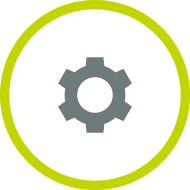
Notable Features & Functionalities Custom Supply Chain Management Software Offers
What Orases supply chain software can provide for you.
Experience seamless logistics and optimized operations with Supply Chain Management (SCM) software with features and functionalities designed to streamline processes, enhance visibility, and drive efficiency.
Inventory Management
Track and manage inventory levels, locations, and movements in real-time to prevent stockouts and overstocking.
Demand Forecasting
Analyze historical data and market trends to predict demand accurately, enabling proactive planning and inventory optimization.
Order Management
Streamline order processing, from order capture to fulfillment, to ensure timely delivery and customer satisfaction.
Supplier Management
Manage supplier relationships, track performance metrics, and facilitate communication to ensure reliable and efficient sourcing.
Warehouse Management
Optimize warehouse operations, including receiving, picking, packing, and shipping, to maximize space utilization and minimize handling costs.
Transportation Management
Plan and optimize transportation routes, modes, and carriers to reduce freight costs, improve delivery times, and enhance visibility.
Track and Trace
Trace the movement of products throughout the supply chain, enabling recall management, compliance with regulations, and quality control.
Analytics and Reporting
Generate actionable insights through advanced analytics and reporting capabilities, enabling data-driven decision-making and continuous improvement.
Integration Capabilities
Seamlessly integrate with other enterprise systems, such as ERP, CRM, and e-commerce platforms, to ensure data consistency and streamline processes.
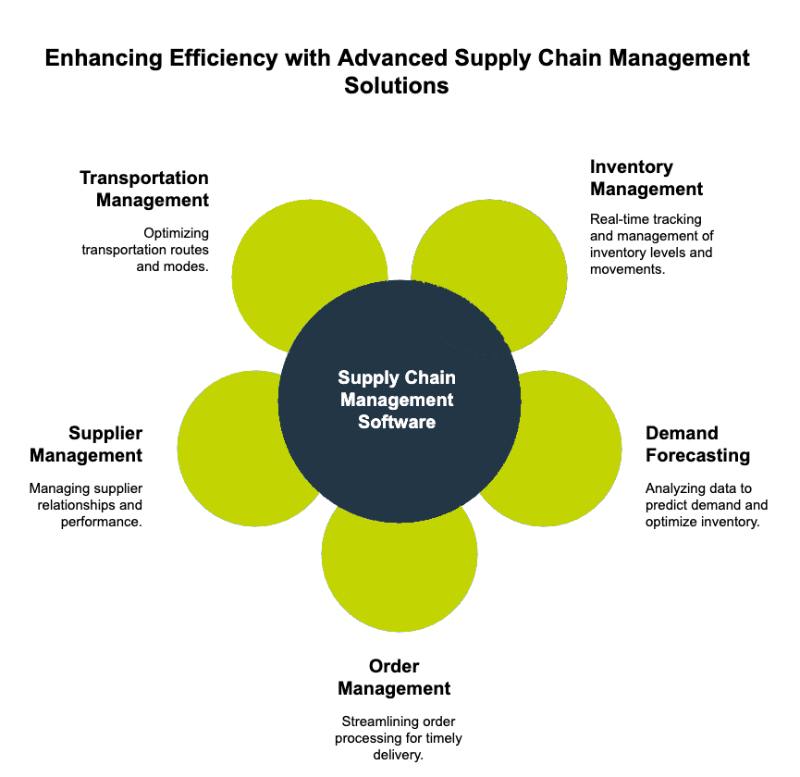

Supply Chain Management Software Development Costs
A frame of reference when planning for your organization’s custom supply chain software project.
Pricing for custom software development can vary greatly, depending on functionality/feature requests, technology stack requirements, and expected completion timeline.
$50,000 – $200,000
Developing smaller general software solutions with some complex features.
$500,000 – $1,500,000
Developing specialized software programs that can be designed for customer use.
$2,000,000+
Developing massive software projects designed fully automate large business operations.
The Key To Improving How SCM Software Can Transform Your Business
Supply chain management software is a must-have for any business that wants to grow and be successful in this day and age. This software provides several benefits to the business, such as cost-effectiveness, heightened customer success, in-depth organization, and security.
Because you can automate some systems, less time is spent by employees on manual processes, opening up their time to drive the business forward. These systems need to be organized and suit the needs of the teams working within them. Once the optimal organization is achieved, teams can focus on their work instead of fighting the system.
Instead of working on repetitive, mundane organizational tasks, team members can solve real problems and become more customer-centric. When a business takes a customer-first approach, service and offerings improve, creating a heightened sense of trust and satisfaction from the consumer base.


The Orases Process
How we work, from start to finish.
Our custom supply chain management software development team has years of experience designing and developing unique & innovative custom software using a streamlined, repeatable process.
Idea
This involves documenting key business processes and eliciting needs and concerns from stakeholders. Additionally, risks associated with introducing new software are evaluated, and mitigation measures are planned. For commercial software products, this phase also includes conducting competition analysis, understanding the target audience’s needs, defining product differentiation, and addressing obstacles to market entry, such as regulatory barriers.
Define Goals
Defining goals involves composing a comprehensive list of requirements and expectations, ensuring alignment between stakeholders and the development team. By starting with a precise definition of the project’s specific requirements and scope, clarity and focus are ensured, laying a solid foundation for the development process to follow.
UX/UI Design
UX/UI design will determine the software’s appearance at the user level, defining app architecture, and integrating existing enterprise systems for cost-effectiveness and reliability. Additionally, UX research is conducted to outline user personas and scenarios, followed by the creation of wireframes and clickable prototypes to visualize user interactions.
Development
Our development team begins working on the essential components of the software. This involves continuous delivery of new software parts, with ongoing analysis of emerging needs and release planning. Mockups are delivered and reviewed to ensure alignment with requirements before developers proceed with developing, testing, and migrating approved software parts to staging and production environments for deployment.
Testing
Orases will conduct thorough verification of functionality and performance, including performance monitoring and utilizing analytics tools for ongoing evaluation. Feedback is gathered from project sponsors and users on the results of the release, and the outcomes are reviewed to approve the scope of the next release. Continuous improvement is prioritized through iterative testing and refinement based on insights gained from monitoring tools.
Deployment
Deployment involves pushing the finalized product to the live server and conducting user testing to ensure it meets stakeholder expectations. Additionally, software monitoring processes are established to track performance and address any issues that may arise post-deployment.
Training & Support
This step includes conducting project evaluations and performing knowledge transfer sessions to your in-house IT team or other vendors involved. Comprehensive training and documentation are offered to users, empowering them to utilize the software effectively. Finally, a final report is provided, and confirmation for project closure is requested to conclude the development cycle.

Awards & Recognitions
Proof our custom supply chain management software development services continue to excel.

Industries We Build Custom Supply Chain Management Software For
Supply chain software built to address specific needs of organizations everywhere.
We tailor fit software to address the specific needs, pain points, and processes for the following industries.

Why Choose Custom Supply Chain Management Software Over Off-The-Shelf Solutions?
Custom SCM software adapts to your unique supply chain needs, offering maximum efficiency and scalability.
Flexible Integration Architecture
Custom SCM solutions integrate seamlessly with your existing systems and unique supplier networks, while off-the-shelf options often require expensive workarounds or force you to change established processes.
Scalable Process Automation
Unlike rigid pre-packaged solutions that limit automation capabilities, custom SCM software can automate your specific workflows and adapt to changing supply chain demands.
Industry-Specific Compliance
Custom SCM platforms are built to address your industry’s specific regulatory requirements and compliance needs, whereas off-the-shelf solutions offer generic compliance features that may not fully address your sector’s requirements.

Our Supply Chain Management Software Development Service Speaks For Itself
But so do our clients.

Logan Gerber – Marketing Director at NFL Foundation
“Orases successfully built efficiencies into our prototype and delivered a high-quality platform.”

Matt Owings – President at Next Day Dumpsters
“They’re honorable, reputable, and easy to work with. They genuinely care about the outcome and want to do a good job.”

Donald J. Roy, Jr., CPA – Executive Vice President at American Kidney Fund
“Orases built a platform that’s boosted productivity by about 30%…”

Torey Carter-Conneen – Chief Operating Officer at American Immigration Lawyers Association
“Not only do they want to succeed, they strive to produce functionally and visually unique software.”

Frequently Asked Questions
Answers to the questions that’s been on everyone’s mind.
What Are The Four Major Types Of SCM Software?
The four major types of SCM software are: Supply Planning Software that optimizes inventory levels and procurement strategies; Transportation Management Systems (TMS) that coordinate shipping and logistics operations; Warehouse Management Systems (WMS) that control inventory storage and fulfillment processes; and Supplier Relationship Management (SRM) platforms that manage vendor interactions and performance.
How Does SCM Software Integrate With Other Enterprise Systems, Such As ERP & CRM?
SCM software integrates seamlessly with other enterprise systems like ERP and CRM through standardized APIs, data exchange protocols, and middleware solutions, enabling real-time data sharing, synchronization of information, and enhanced cross-functional collaboration.
How Do I Ensure a Smooth Transition To SCM Software?
Prioritizing data migration and integration, gathering feedback through pilot implementations, and continuously monitoring and optimizing performance to drive success.
How Does SCM Software Address Sustainability & Compliance Concerns In Supply Chain Management?
SCM software helps address sustainability and compliance concerns in supply chain management by providing tools for tracking and optimizing environmental impact, ensuring adherence to regulatory standards, and promoting ethical sourcing practices. It enables the monitoring of supplier performance, material traceability, and carbon footprint, facilitating transparency and accountability throughout the supply chain.

Featured Insights
Take a deeper dive into the world of possibilities supply chain management software development services offer.

Revolutionizing Supply Chains With Custom Software
Download the white paper to learn more about the benefits of custom software solutions in supply chain management.

How Supply Chain Management Software Increases Operational Agility
As global supply chains evolve, many companies continually turn to supply chain management (SCM) software to help improve production.

Related Services & Solutions
We’ve got everything you need.






